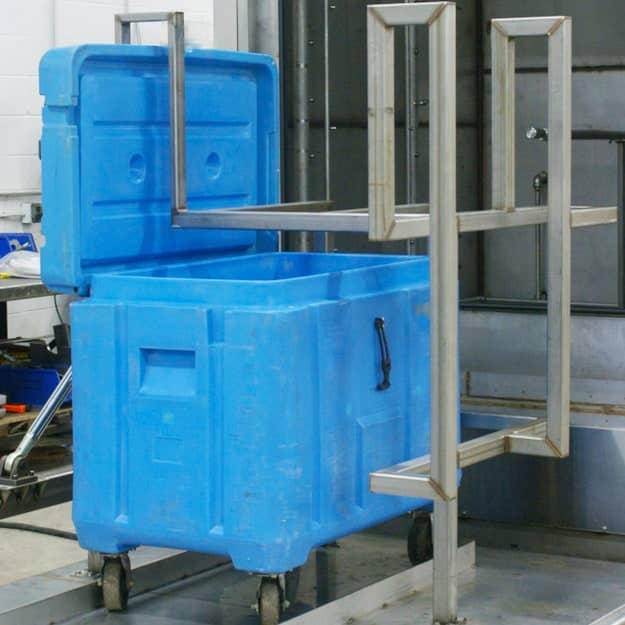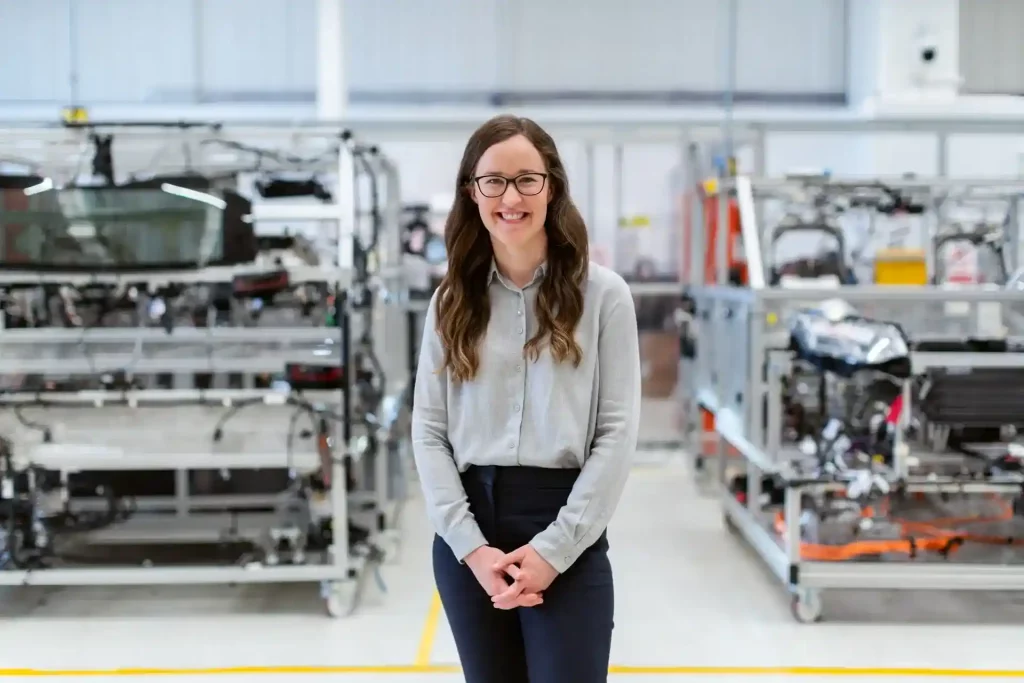Adherence to 3A Sanitary Standards for industrial cleaning systems is crucial for ensuring the highest levels of cleanliness and safety in food, seafood, dairy, and pharmaceutical processing equipment. These standards set the foundation for the design and construction of sanitary equipment, ensuring that industries meet strict criteria to maintain the integrity of their products. In this blog post, we will delve into the importance of 3A standards across various sectors and explore how Better Engineering’s part washers can aid in achieving compliance with these rigorous regulations.
Understanding 3A Standards: The Foundation of Sanitary Equipment Design
The inception of 3A Sanitary Standards was a pivotal moment for industries that process consumables, marking a unified approach to safeguarding public health through enhanced equipment design. These meticulously curated standards provide a comprehensive framework to elevate hygiene practices within the food, dairy, seafood, and pharmaceutical sectors. They emphasize the crucial elements of equipment construction, spotlighting the need for smooth, non-porous surfaces that thwart microbial growth and facilitate effortless cleaning and sanitation processes.
The 3A guidelines underline a critical aspect of material selection. The standards mandate the use of materials that resist corrosion and withstand the rigorous cleaning chemicals and procedures necessary to eliminate pathogens. This careful attention to material choice ensures that equipment does not become a liability in maintaining product purity and safety.
Moreover, the standards advocate for designs that enable complete drainage and minimize the risk of product contamination. By eliminating areas that could harbor bacteria or other contaminants, these guidelines significantly reduce the potential for biofilm formation, thereby enhancing the overall safety of the processing environment.
The 3A standards serve as a testament to the industry’s commitment to consumer safety. They lay down the blueprint for equipment design that meets the highest hygiene and safety benchmarks. Companies are better positioned to achieve operational excellence through their implementation, demonstrating an unwavering dedication to producing safe, quality products.
Overall, 3A guidelines emphasize:
-
Smooth, non-porous surfaces to prevent microbial growth
-
Corrosion-resistant materials that withstand harsh cleaning chemicals
-
Construction methods that eliminate crevices and allow for full drainage
By mandating these features, the standards support effective cleaning, reduce risk of contamination, and enable safe, repeatable production cycles. For manufacturers, integrating 3A requirements translates into long-term performance, lower contamination risks, and regulatory peace of mind.
Core Equipment Design Elements Required by 3A Standards
To simplify the relationship between 3A design principles and their operational benefits, the table below outlines how each key equipment component aligns with both compliance and business performance:
| Component | 3A Sanitary Requirement | Business Benefit |
|---|---|---|
| Surface Finish | Must be smooth and free of pits or scratches | Easier to clean, reduces microbial harborage, minimizes cleaning downtime |
| Welds & Joints | Continuous, smooth welds with no voids or crevices | Prevents bacteria buildup, enhances durability, reduces risk of failure |
| Drainage Design | Equipment must allow full drainage with no pooling or trapped liquids | Speeds up cleaning, prevents biofilm formation, reduces sanitation labor |
| Materials | Use of corrosion-resistant, non-toxic, and clean-in-place (CIP)-compatible materials | Extends equipment life, reduces contamination risk, complies with food safety laws |
| Seals & Gaskets | Must be cleanable, non-absorbent, and resistant to sanitizing agents | Prevents leaks, maintains product purity, reduces replacement frequency |
| Accessibility | Equipment must be designed for easy disassembly or access to all cleanable areas | Lowers maintenance time, improves cleaning effectiveness, supports inspections |
General Requirements of 3A Standards Across Industries
3A Sanitary Standards establish a uniform set of guidelines that ensure equipment across the food, seafood, dairy, and pharmaceutical industries can be effectively cleaned and maintained. These standards focus on several essential design and construction principles for maintaining sanitary conditions. 3A Standards require that surfaces in direct contact with products are smooth and devoid of pits and crevices to prevent microbial harborage and ensure easy cleaning. Additionally, proper drainage is emphasized to avoid the pooling of liquids, which can become breeding grounds for bacteria and other contaminants, necessitating washdown-rated part washers. Durable, corrosion-resistant materials are mandated to withstand cleaning agents and processes necessary for sanitization without compromising the equipment’s integrity or the product’s safety. These foundational requirements are essential for any company aiming to minimize the risk of contamination and spoilage, ensuring safe, high-quality products are produced. Adherence to these guidelines fosters consumer trust and aligns with regulatory expectations, safeguarding the health of the public and the viability of businesses operating within these critical sectors.
The Critical Role of 3A Standards in the Dairy Sector
In dairy production, applying 3A standards is non-negotiable for safeguarding product quality and consumer health. These standards, tailored explicitly for dairy processing equipment, play an indispensable role by setting the highest benchmarks for sanitary design, construction, and operation. Adhering to these standards has far-reaching implications for dairy processors, influencing every stage of the manufacturing process—from milk collection to packaging.
3A sanitary seals for dairy equipment exemplify the meticulous requirements set forth. These seals are vital for ensuring that there are no breaches in the equipment where contamination could infiltrate, potentially compromising the safety and integrity of dairy products. The emphasis on using materials resistant to corrosion and capable of enduring the aggressive cleaning protocols essential for dairy processing underscores the comprehensive nature of 3A standards.
Furthermore, these standards meticulously dictate the engineering of equipment and part washers to eliminate areas that could harbor bacteria or contribute to product degradation. Features such as seamless construction and the facilitation of complete drainage are not just recommended but required, ensuring that dairy products are processed in an environment that upholds the strictest hygiene and safety standards.
By integrating these guidelines, the dairy industry commits to a level of operational excellence that not only meets but often exceeds regulatory requirements, reinforcing consumer confidence in the safety and quality of dairy products.
Advancements in Seafood Processing through 3A Standards
The seafood industry has seen significant advancements in processing and handling practices thanks to the rigorous implementation of 3A standards. These standards have been instrumental in transforming the landscape of seafood safety, emphasizing the need for equipment that eliminates the risks of contamination while ensuring the utmost freshness of seafood products. Compliance with 3A standards in the design of seafood processing tanks, conveyors, and part washers ensures that all surfaces in contact with seafood are smooth, easily cleanable, and constructed from materials resistant to corrosion and the harsh environments typical in seafood processing facilities. This level of detail in equipment design dramatically minimizes the opportunities for pathogen harborage and cross-contamination, critical factors in the seafood industry where the margin for error is slim.
The focus on streamlined, sanitary design not only facilitates easier and more effective cleaning processes but also optimizes product flow to prevent product degradation. As the seafood industry continues to evolve, the application of 3A sanitary standards serves as a cornerstone for innovation, driving improvements in product quality, safety, and consumer trust. By adhering to these meticulous guidelines, seafood processors are able to meet the increasing demands for high-quality, safe seafood products in a competitive global market.
The Intersection of 3A Standards and Pharmaceutical Processing and Manufacturing
In the meticulous and highly regulated world of pharmaceutical manufacturing, implementing 3A standards is paramount for ensuring that the equipment used in the production of pharmaceuticals adheres to the highest hygiene and safety benchmarks. These standards are instrumental in outlining the equipment design and construction requirements, which must promote cleanliness, prevent contamination, and ensure the uncompromised quality of pharmaceutical products. Embracing 3A standards within the pharmaceutical industry underscores a proactive approach to safeguarding medication efficacy and safety, a commitment foundational to patient care and public health. The guidelines focus on material selection, easy and complete cleaning design, and the avoidance of crevices or dead ends where contaminants could linger, all of which are critical for the pharmaceutical sector. This alignment with 3A standards demonstrates an industry’s dedication to operational excellence and a rigorous quality assurance process, essential in producing pharmaceuticals where purity and sterility are non-negotiable. Applying these standards in pharmaceutical manufacturing processes fosters trust in healthcare providers and patients. It ensures compliance with global regulatory demands, cementing the industry’s role in protecting and enhancing public health.
Interested in finding your solution? Contact Better Engineering for more information or free parts testing.


